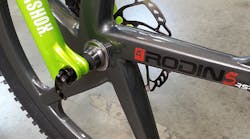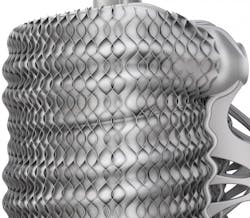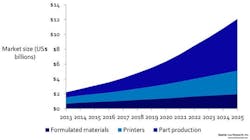The copter carries a two-part polyurethane foam and mixes them during deposits and building. Mirko Kovac, professor at the college, says that the flying 3D printer is inspired by birds called swiflets that build nests with saliva — the ones that go into the Chinese delicacy, bird's-nest soup. In theory, the polyurethane-spewing UAV could one day help patch roofs, build bridges, and seal off dangerous environments remotely.
But is this really where the bulk of 3D printing is headed — or are there more practical applications? To answer that question, we talked with Jordan Brandt, a Technology Futurist at Autodesk, about 3D printing.
In fact, Brandt thinks that the majority of 3D printers will produce parts in less splashy but equally sophisticated ways.
3D printing is most suitable for the 'last mile' of factory automation — so in the next couple of years, expect additive mass-production methods to increase factory automation and product customization, predicts Brandt.
“Consumer uses of 3D printing attract most of the headlines, but industrial uses, from molds and tooling to actual production parts, are quietly having the greatest impact,” says Anthony Vicari of Lux. Vicari and Lux published a report on the technology last month: How 3D Printing Adds Up: Emerging Materials, Processes, Applications, and Business Models. Above, the chart illustrates how the total market for 3D printers, materials, and parts will reach $12 Billion in 2025, and how parts production dominates.
Brandt also argues that until now, it's been challenging for robots to do final assembly, especially in electronic devices — mostly because the parts in these products are small and difficult to manipulate. So tiny screws and electrical connectors are still largely put together by dexterous human hands. 3D printing will change that, and let manufacturers reduce the number of parts in assemblies, and make components conducive to robotic assembly.
Here are several examples profiled by our sister publication Electronic Design in doing just that at the Consumer Electronics 2014 show this January. Here's another from manufacturer Optomec, based in St. Paul:
As design, simulation, and manufacturing software advance in pace with new 3D printing hardware and materials, the lines become increasingly blurred. This gets into some very interesting questions, Brandt observes. If software specifies a unique blend of materials with entirely new properties, and instructs the machine to make it, is the IP in the software, the materials, or the machine that compiles it?
The idea is that if engineers can program matter to compile itself into new forms, the design is the end product … or the instruction set itself — perhaps a bit like a kind of virtual DNA.
In fact, the term for this is programmable matter — a slippery and evolving expression, but one that generally refers to materials that respond to their environments with some kind of smarts. In the context of additive manufacturing, some people use the term 4D printing when referring to 3D-printed smart materials.
Two final predictions from Brandt:
• The digital supply chain — in other words, from design model to simulation and additive-augmented manufacturing — will merge with 3D-printing raw-material supplies, to let people produce personal products in a "hyper-localized context." That will eliminate the need for massive factories, warehouses, and container-port infrastructure … with efficient means to ship bulk products such as resins and powders.
• Markets that have historically relied on industrialized nations will use 3D printing (along with other approaches) to design and manufacture their own goods, for their own use.




